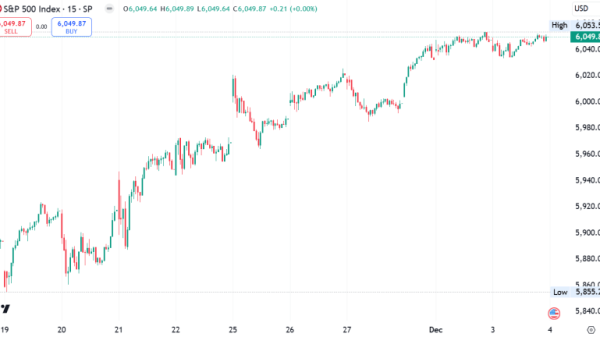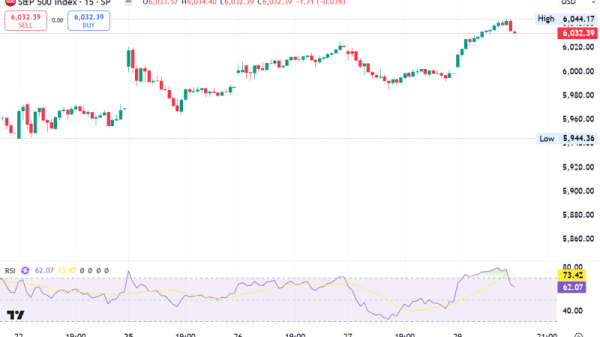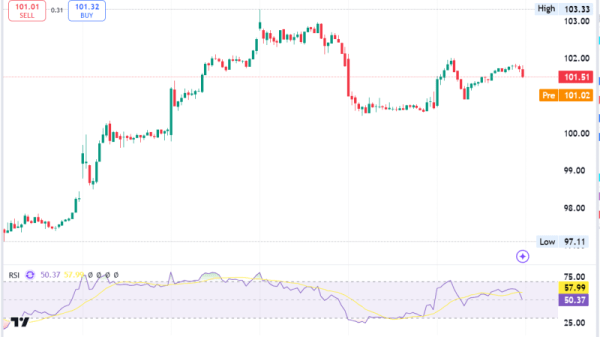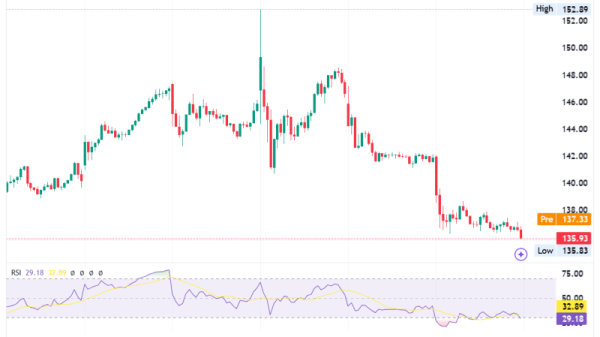By Jamie McGeever
ORLANDO, Florida (Reuters) – An extraordinary year for investors is poised to end with a monetary policy bang, with almost every G10 central bank scheduled to deliver interest rate decisions over a 10-day period this month.
Four of the G10 central banks meet this week and five, including the Federal Reserve, meet next week. Remarkably, four of those – Bank of Japan, Bank of England, Riksbank and Norges Bank – will deliver their policy verdicts on the same day, Thursday December 19.
The sweep of decisions and guidance will be felt most acutely in FX markets, where implied volatility across G10 currencies is already at the highest pitch since April last year.
Importantly, most of these currencies will be going into these meetings on the back foot. Sterling is the only one that has held its own against the dollar this year, and, even then, only barely. All other G10 currencies are between 4% and 9% weaker against the greenback in 2024.
It’s easy to see why implied FX ‘vol’ is so elevated going into the end of the year. Uncertainty over U.S. trade policy following Donald Trump’s election victory, rising geopolitical tensions, and the ebb and flow of monetary policy expectations are all playing their part.
On that note, in addition to the nine G10 central banks cited above, monetary policymakers in Brazil, Indonesia, Thailand and Colombia also meet within this 10-day period, just as market liquidity will be thinning out for seasonal reasons.
It’s a different story for stock and bonds, at least in the United States. The VIX, Wall Street’s so-called ‘fear index’, and the ‘MOVE’ index of implied volatility in Treasuries are the lowest they’ve been in months. The latter is notable given how much Treasuries have moved since the U.S. presidential election on November 5 and the potential policy changes that could accompany Trump’s return to the Oval Office in January.
LONG VOL
Wall Street analysts are warning that the second Trump administration’s agenda could cause FX volatility to outlast the holiday season.
In their 2025 outlook, currency analysts at JP Morgan advise clients that “elevated” U.S. policy uncertainty makes a strategic short vol stance “untenable.”
“2025 will not be a year for the faint-hearted to be short vol,” they wrote on Nov. 28, citing President-elect Trump’s hardline stance on trade and his threats to slap massive tariffs on some of America’s key trading partners.
Karen Reichgott Fishman at Goldman Sachs last week echoed these statements, noting, “this makes it a good time to assess the value of hedging any exchange rate exposure in global portfolios”.
But before Trump is sworn in, currency traders will have to navigate the looming tsunami of rate decisions this month. Mark your calendars for a bumpy year end.
Dec. 10
Reserve Bank of Australia: Markets are pricing in a 90% probability that the cash rate will be held at 4.35%, with around 70 basis points of easing expected by the end of next year. The RBA hasn’t yet started its easing cycle.
Dec. 11
Bank of Canada: Markets are pricing in a quarter point cut and a 75% probability of a half point move, with around 115 bps of cuts over the next year. The BOC has already cut its Bank Rate by 125 bps in this cycle, the most among all G10 central banks.
Dec. 12
European Central Bank: Markets are pricing in a quarter point cut, with around 150 bps of easing expected over the next 12 months.
Swiss National Bank: Markets are pricing in a quarter point rate cut and a 65% chance of a half point reduction. Traders are expecting around 85 bps of easing over the next 12 months. SNB Chairman Thomas Jordan recently floated the idea that the SNB could return to negative interest rates, if necessary.
Dec. 18
Federal Reserve: Markets are pricing in a 90% probability of a quarter point cut, with around 80 bps of easing expected by the end of next year.
Dec. 19
Bank of Japan: Traders expect the key policy rate to be raised by 10 bps, and around 45 bps of tightening anticipated over the next 12 months.
Norges Bank: Markets are pricing in a 20% chance of a quarter point cut, with around 120 bps of easing expected over the next year.
Riksbank: Markets are pricing in a 70% likelihood of a quarter point cut, with around 100 bps of rate cuts expected by the end of next year.
Bank of England: No rate change anticipated at this meeting, but markets are pricing in around 75 bps of easing over the next 12 months.
(The opinions expressed here are those of the author, a columnist for Reuters.)






































